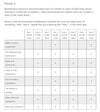Tesla Model 3 manual says the car's brake fluid needs a "health check" every 2 years. It looks like there are brake fluid liquid tester pens like this that measure the moisture content, and then there are test strips like this that measure copper content.
Do I need to test using both methods? Or can I just use the tester pen to check moisture content only? I have a 2018 Model 3 with about 10,000 miles on it, and I haven't changed the brake fluid yet. Thanks!
Do I need to test using both methods? Or can I just use the tester pen to check moisture content only? I have a 2018 Model 3 with about 10,000 miles on it, and I haven't changed the brake fluid yet. Thanks!




